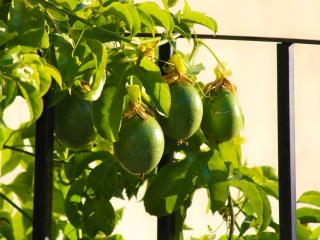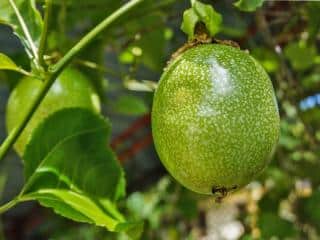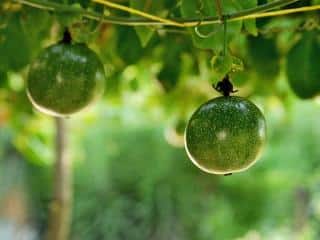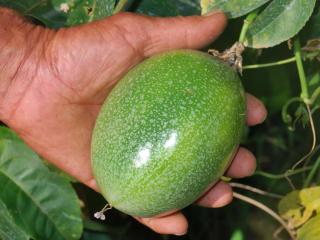

Longing for exotic flowers and fruit in your garden? Go ahead and adopt passionfruit—it’ll fill your eyes and taste buds.
Key passion fruit facts:
Name: Passiflora edulis
Family: Passifloraceae
Type: climbing plant
Height: 6.5 to 16.5 feet
Exposure: warm and sunny
Soil: rich, light, fresh, but well drained
Blooming: summer – Foliage: evergreen – Harvest: summer
Passionfruit loves sun and heat. Non-hardy, it requires a minimum temperature of about 50 °F (10 °C).
For soil, it needs to be well-drained, as too much moisture during dormancy can rot the roots. The soil should also be rich and light for better plant development.
Passiflora edulis, being non-hardy, it’s best to plant it in spring rather than in fall.
 Dig a planting pit about around 20 inches (50 cm) deep.
Dig a planting pit about around 20 inches (50 cm) deep.In regions with harsh winters, you can grow passionfruit in a pot. In this case, it needs to be quite large and have holes for water drainage. The substrate to use is a mixture of 20 to 25% sand, the rest being potting soil.
Before filling the pot, put a drainage layer at the bottom (clay pebbles or gravel).
Note that although passionfruit can be grown in a pot, fruiting will be rarer. That’s why it’s recommended to grow it in open ground, but under a greenhouse or nursery.

Boost grenadilla’s growth and production with a potassium-rich fertilizer once a month from start of vegetation. Stay clear of nitrogen-rich fertilizers. They encourage leaves at expense of flowers and fruit.

Revitalizing the base can be done by cutting branches back to 1 to 2 feet from the stump, keeping only the most vigorous and healthy stems. Mind you, such a prune delays blooming by a year or even two. So don’t do it too often.
You can sow grenadilla in a heated greenhouse in fall, then transplant seedlings in the following spring. Layering is also an option in summer, as are cuttings from green stems in June or semi-hardened ones at end of summer.
Passion fruit is a hardy plant. It can still be targeted by certain pests:

For further reading:
Common names: grenadilla, edible passionflower, passion fruit, maracuja
Passiflora edulis or grenadilla is the famous passion fruit. Native to Brazil, it boasts big, shiny leaves reaching up to 8 inches (20 cm). It also sports white and purple flowers and, of course, edible oval yellow or violet fruits.
→ For further reading: